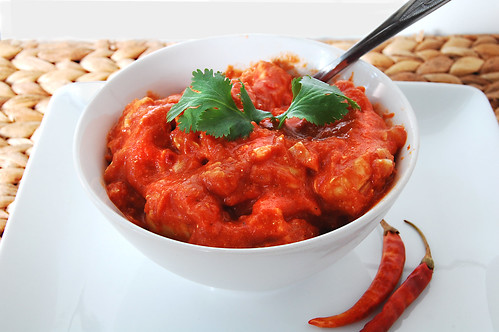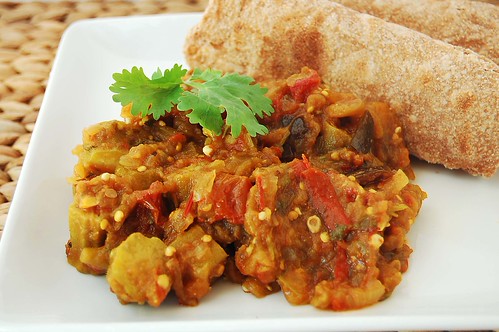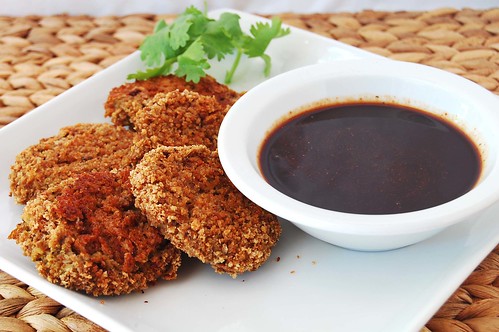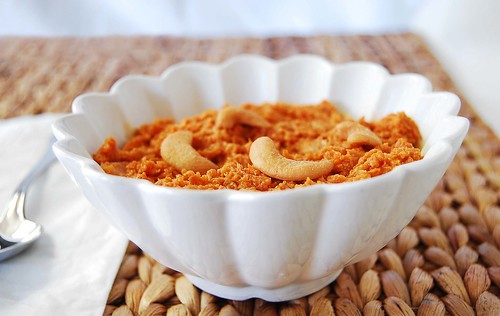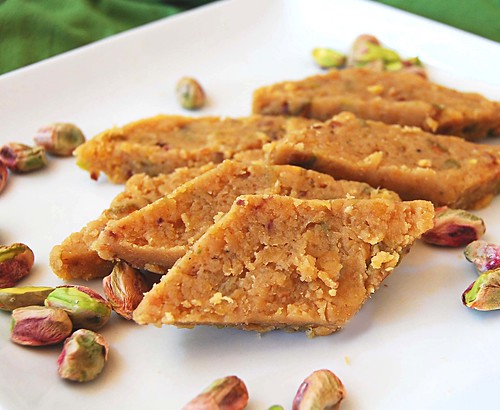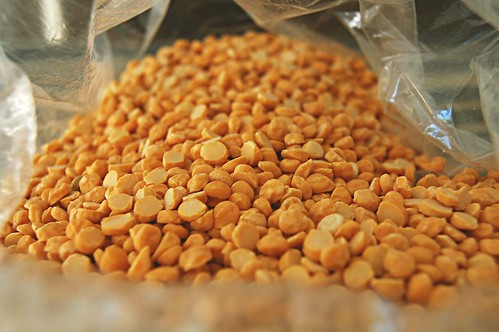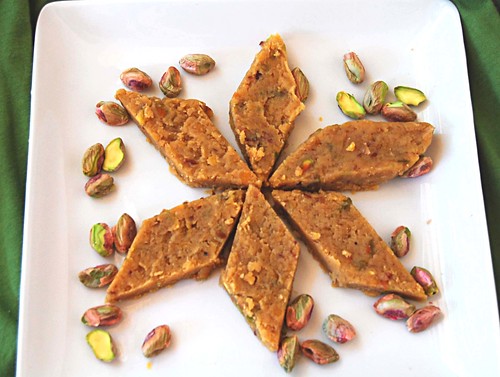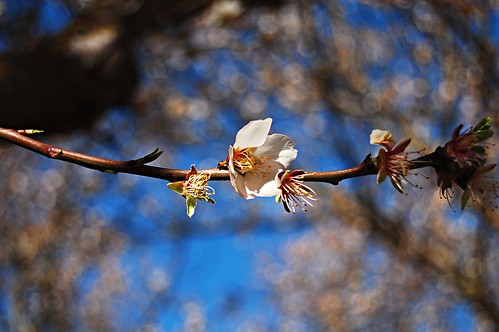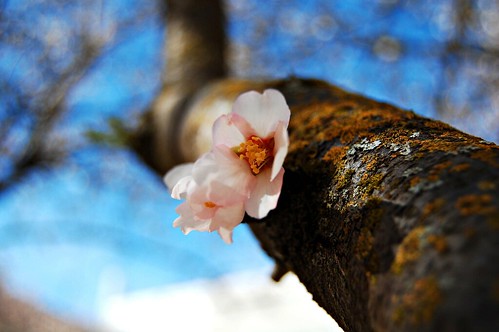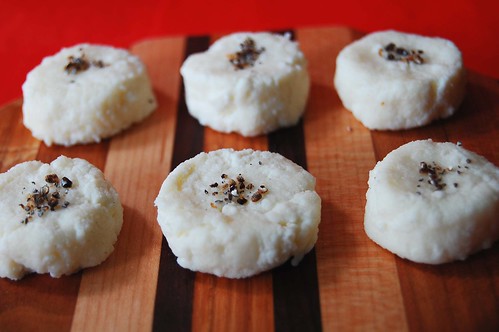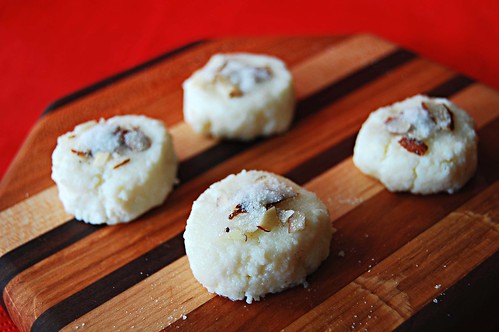
Palak Paneer. Funny sounding but yummy tasting. Palak paneer (or spinach and cheese) is a quintessential vegetarian dish of North India. It is the vegetarian dish that even meat-lovers crave. My mother makes some of the best palak paneer I have ever had. Unfortunately it is almost impossible to get the recipe from her since, well, she doesn't have one. Her technique is to add some of 'this' and 'that' until the taste and texture is perfect. Measurements are a mystery. See, my mother doesn't use measuring spoons for adding spices. I don't even think she uses spoons. She uses her hands and her fingers and her tastebuds. As I stand in my kitchen, measuring out ingredients, desperately trying to replicate her "recipes", I imagine what she'd think if she saw me there. She'd be proud for sure, but she'd probably be laughing too.
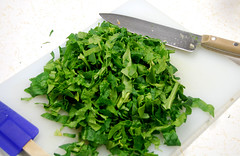 | 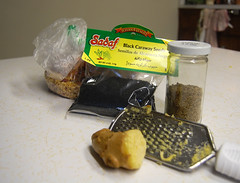 | |
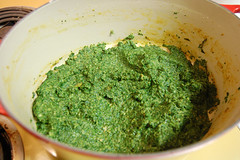 | 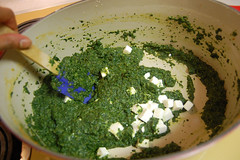 |
My (many) previous attempts to replicate her palak paneer have left me with a dish that was either too bitter, too sour, or lacking of a robust spinach flavor. Until now. This palak paneer has a great creamy spinach flavor, without the bitterness that many spinach dishes tend to have. The addition of spices also gives it a nice kick, so you know you're not just eating creamed spinach. The paneer is firm enough that it won't lose its form but soft enough that it almost melts in your mouth. I think Mama would approve.
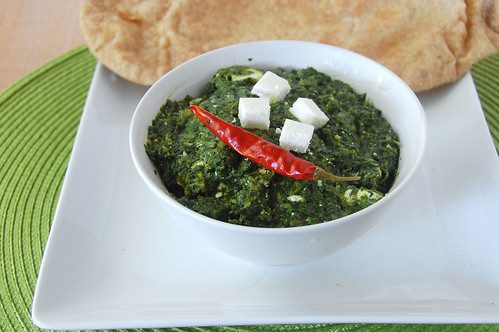 Palak Paneer
Palak Paneer*10 cups of chopped fresh spinach or 10 oz of frozen spinach
*2 tablespoons tomato paste
*2 teaspoons grated ginger
*3 cloves garlic
*1 tablespoon oil
*1/2 teaspoon cumin seeds
*1/2 teaspoon caraway seeds
*1 teaspoon coriander powder
*1/2 teaspoon turmeric powder
*1/2 teaspoon red chili powder
*1 teaspoon sugar
*1/3 cup heavy cream or (not skim) milk
*2 tablespoons flour
*salt and pepper, to taste
*1 1/2 cups of paneer, cut into 1/2 inch cubes
1. Place the spinach, tomato paste, ginger, and garlic in a food processor or blender and blend until smooth.
2. In a large pan, heat the oil until hot, then add the cumin and caraway seeds. Fry the seeds for about 30 seconds. Add the coriander, turmeric, and chili powder, and cook for about 2 minutes.
3. Add the spinach, sugar and milk. Stir to combine. Stir in the flour and season with salt and pepper. Cook, covered, for about 10 minutes.
4. Remove from heat and (with a rubber spatula) gently fold in the the paneer.

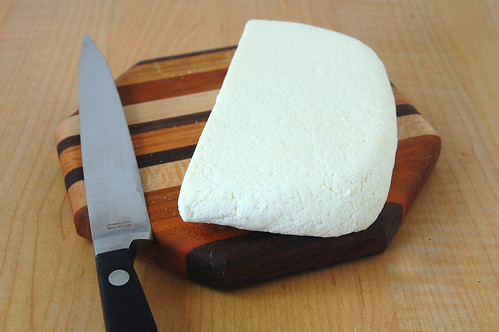
 Once the milk reaches a boil, stir in a half cup of lemon juice or vinegar. The milk will immediately begin to separate into a liquid (whey) and curds. Continue stirring for another minute or two.
Once the milk reaches a boil, stir in a half cup of lemon juice or vinegar. The milk will immediately begin to separate into a liquid (whey) and curds. Continue stirring for another minute or two. Now carefully pour the contents of the pot into the lined colander. Be very carefully since the liquid will be extremely hot. Every time I do this step, it breaks my heart a little to have to throw out the whey. But even after lots of google searching, I still have not found a use for it.
Now carefully pour the contents of the pot into the lined colander. Be very carefully since the liquid will be extremely hot. Every time I do this step, it breaks my heart a little to have to throw out the whey. But even after lots of google searching, I still have not found a use for it.
 Rinse the paneer with a bit of cold water just so it is warm enough to handle. Then try to squeeze out as much of the liquid as you can using your hands.
Rinse the paneer with a bit of cold water just so it is warm enough to handle. Then try to squeeze out as much of the liquid as you can using your hands. The paneer needs to be drained of its liquid, and depending on how firm you'd like it, this could take anywhere from 2 hours to overnight. Most savory Indian dishes require a firm block of paneer, but many desserts call for a softer paneer that can be achieved with 2-3 hours of draining.
The paneer needs to be drained of its liquid, and depending on how firm you'd like it, this could take anywhere from 2 hours to overnight. Most savory Indian dishes require a firm block of paneer, but many desserts call for a softer paneer that can be achieved with 2-3 hours of draining. This is what the paneer should look like after being drained overnight. The texture will be just like the kind you find in the Indian grocery stores, but the taste will be at least 10 times better.
This is what the paneer should look like after being drained overnight. The texture will be just like the kind you find in the Indian grocery stores, but the taste will be at least 10 times better.
 Here is what it looks like cut up. Anyone want to take a guess as to what I made with this?
Here is what it looks like cut up. Anyone want to take a guess as to what I made with this? Homemade Paneer
Homemade Paneer

